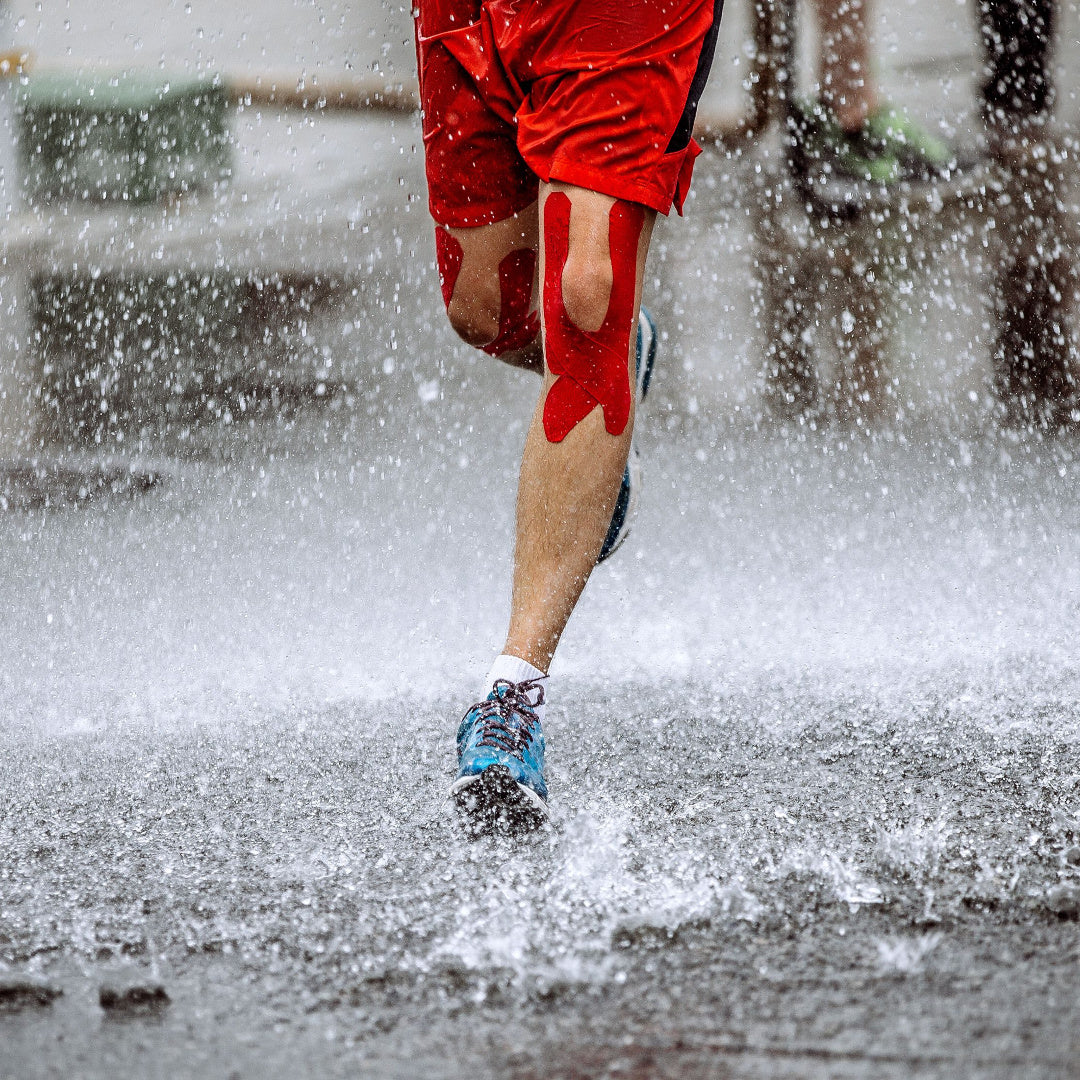Running in the rain doesn't differ significantly from running at other times, but it does call for a little more caution and preparation. You cannot simply go outside as you would on a beautiful day. Running in the rain is essential for both novice and seasoned runners. Skipping an exercise is never a good idea, regardless of the weather.

Running in the rain is a fantastic way to simultaneously strengthen your immune system, mind, and confidence! You can complete your run and make it as enjoyable as possible by following this advice for running in the rain.
-
Select Appropriate Layers to Wear
It is advisable to wear extra compression clothing below if a runner prefers to wear shorts for the race. For you, they will eliminate the symptom of inner thigh chafing. Also, don't forget to pack a wind shell made of waterproof material, like nylon. It is the crucial top layer that will keep you from becoming cold at all during a downpour. The shell can raise a runner's core temperature and lessen the risk of hypothermia even if it cannot prevent him from becoming wet.
-
Wear a brimmed hat
During a rainy run, a hat with a brim can be your best friend. Even in a rainstorm, it will keep the rain off your face so you can see. When selecting a wide-brimmed hat, be sure to take the weather and other factors into account. Wear a breathable one with lots of ventilation if it's warm and raining so you don't get too hot.
Choose a thicker hat and cover it with a fleece headband if it's chilly, windy, or rainy to protect your ears. Additionally, a headband can prevent it from flying off in a strong breeze.
-
Wear the Proper Footwear
Rely on outdated shoes for running in the rain and save your favorite footwear for dry days. What kind of running you'll undertake will help determine which shoes are best for running in the rain. For instance, waterproof shoes may be better if you intend to run on a paved surface, but they may not be the best choice if you intend to run on a trail and will likely cross creeks and puddles.

-
Avoid chafing
Chafing can occur during any run, but if you're wet from the rain, it may be considerably worse. Spread rashes cream or anti-shoe bite gel on your feet, inner thighs, underarms, sports bra lines (women), and nipples (men) before a long run to help prevent chafing in areas where you could ordinarily acquire blisters or chafe.
-
Observe Your Steps
Although you should always be alert, running in the rain requires extra caution because the ground is slick. The goal is to move slowly and pay close attention to your footing, much like you would when running on a trail, but be aware that there may be several roots, pebbles, or branches for you to trip over.
As much as you can, try to avoid treading in puddles. Your feet and running shoes will get wet from the rain, but if you step in a large puddle, they will become completely drenched.

-
Bring extra socks
Put an extra pair of socks in a plastic bag and keep it in your jogging belt or fanny pack if you have room. A dry pair of socks will feel much more comfortable and, ideally, avoid blister rash, though you'll lose some time stopping to change them. This is especially useful if it's pouring when you start running and your socks get wet but the rain stops while you're running or competing.
-
Safeguard and cover your electronics
It's a simple process to store devices like an iPod and a phone in a Ziploc bag or other waterproof container. Additionally, sports apparel with internal pockets will serve to keep your electronics dry. These pockets may not always be able to entirely protect your electrical gadget from the elements, so you may need a waterproof case that is a little more expensive. The final, least expensive recommendation is to place your phone and iPod in a plastic bag that can be closed.
-
Dry off your shoes
Take off your running shoes and pack them with crumpled newspaper balls after you return from a wet run or race.
The paper also wicks moisture away from the shoes, helping the shoes maintain their shape. Avoid putting them in the dryer or front of a heater because doing so could cause them to shrink or lose their shape, making them unfit for you.

Starting is perhaps the most difficult part of running in the rain. You might discover that you enjoy it after you start running and warm up. As you splash in the puddles, it's also a fantastic way to reconnect with your inner child. However, sprinting through the rain will give you a genuine savage vibe. You are strengthening your mental fortitude and becoming more aware of your ability to overcome any problem while the rain is pounding your face.





